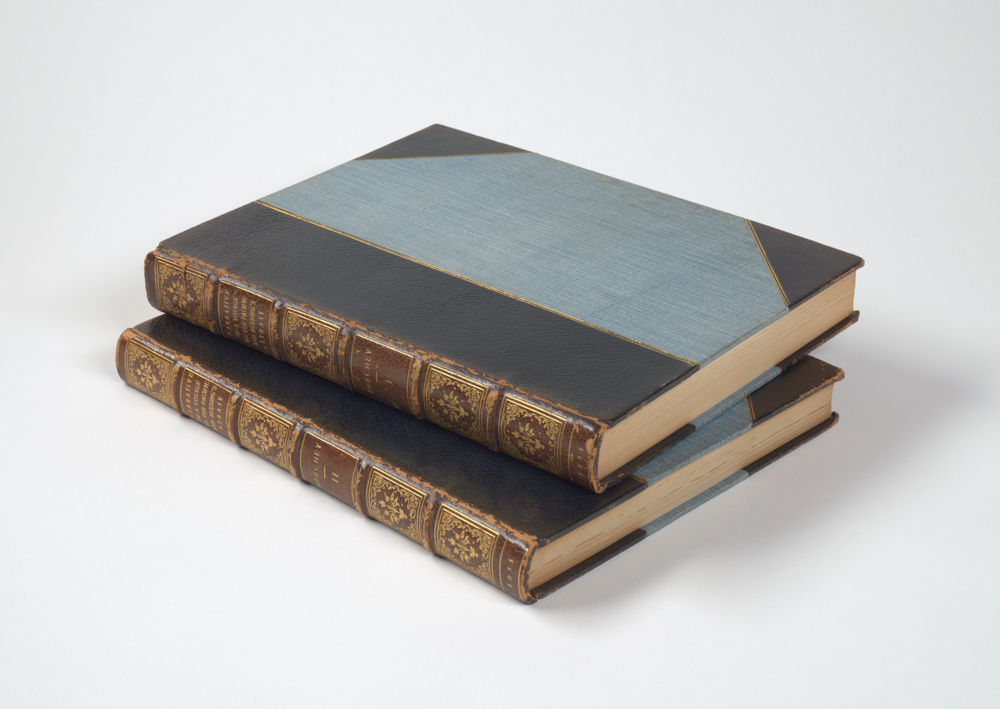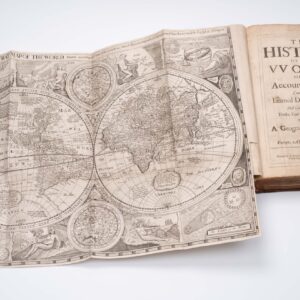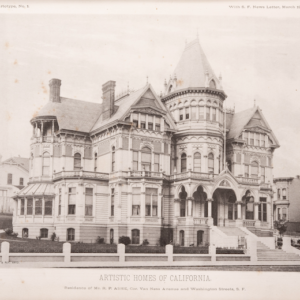Charles F. Hall’s Second Expedition to the Arctic with an extraordinary family provenance.
Narrative of the Second Arctic Expedition made by Charles F. Hall: His Voyage to Repulse Bay, Sledge Journeys to the Straights of Fury and Hecla and to King William’s Land, and Residence Among the Eskimos During the Years 1864-’69.
$850
1 in stock
Description
Charles Francis Hall’s voyages to the Arctic are the stuff of legend, and his ultimate fate was tragic. In this narrative of the second expedition, readers venture on a journey across the icy sheets of the Arctic seas in search of Frobisher’s mines and evidence of survivors from the lost Franklin Expedition.
This first edition of Charles F. Hall’s second expedition to the North Pole is a treasure to all those interested in the history of Arctic exploration. This impressive, weighty volume tells the story of a nearly three-year American expedition to the Arctic in the latter half of the 19th century. The book is brimming with illustrations, maps, and photographic portraits – including a large folding map showing an azimuthal projection of the entire polar region. The rugged binding of finely woven brown cloth is adorned with vibrant gold stamping (of the title on the spine and a dramatic frozen landscape on the front board). Neatline’s example is a clean and tightly bound copy, with firm hinges ensuring durability. The heliotype portrait of Charles Hall, protected by a tissue guard, is the first thing that meets the reader, while additional engraved portraits of John Franklin, Henry Grinnell, and Eskimo Joe (also behind tissue guards) add personal elements to this captivating tome.
Within the pages of this book unfolds an enthralling account that transports readers to the grandeur and harshness of the Arctic and conveys a story that surpasses the bounds of most people’s imagination. Charles Francis Hall, an American Arctic explorer, takes center stage. Known for his fateful leadership of the American-sponsored Polaris expedition — an audacious attempt to be the first to reach the North Pole — Hall’s personal story is shrouded in mystery and suspicion regarding his untimely demise.
This book also recounts elements of Hall’s first expedition (1860-63), a pivotal moment in his Arctic endeavors. On this voyage, Hall secured passage on the whaler George Henry, a vessel associated with the salvage of Edward Belcher’s exploration ship, the HMS Resolute. Hall’s journey took him as far as Baffin Island, where the George Henry was compelled to winter. During the stay, local Inuit people shared tales of surviving relics from Martin Frobisher’s mining venture on Baffin Island. Intrigued by the stories, Hall traveled there to witness these remnants firsthand, benefiting from the invaluable guidance of his newly found Inuit companions, Ebierbing (“Joe”) and Tookoolito (“Hannah”). Hall also discovered what he interpreted as evidence that members of Franklin’s lost expedition might still be alive.
Upon returning to New York, Hall collaborated with Harper Brothers to publish his expedition account, titled “Arctic Researches and Life Among the Esquimaux.” Edited by the British mariner and writer William Parker Snow, who shared Hall’s obsession with the fate of Franklin, the book divulged Hall’s remarkable experiences. Tensions nevertheless arose between the two men, primarily due to Parker Snow’s slow editing process and his later claim that Hall had used his ideas for the search for Franklin without proper acknowledgment.
Hall’s third and final expedition – the infamous Polaris expedition – was plagued by insubordination, incompetence, and poor leadership. Upon returning to the ship from an exploratory sleigh journey, Hall fell gravely ill and accused crew members of poisoning him. Eventually, this accusation led to the exhumation and autopsy of Hall’s body in 1968, startlingly revealing significant amounts of arsenic in his system from the last two weeks of his life.
Census & provenance
While the published narrative of C.F. Hall’s second expedition grows scarcer over time, it remains a relatively common volume on the open market. Neatline’s example of this Arctic adventure is nevertheless noteworthy in that it enjoys an extraordinary provenance from the prominent Kane family of Pennsylvania. The book is inscribed by John Kitzing Kane Jr. (1833-1886), whose signature and an 1881 date feature prominently on the title page. He was a medical doctor and the fourth son of John Kitzing Kane (1795-1858), an American lawyer who served as the 21st Attorney General of Pennsylvania (1845-1846) and subsequently as a United States district judge on the District Court for East Pennsylvania (1846-1858).
John Kitzing Kane Jr.’s brother was the famous Elisha Kent Kane, a medical officer who joined the First Grinnell Expedition (1850-51), which sought to discover the fate of Sir John Franklin’s expedition and possibly rescue any survivors. Elisha Kent Kane was credited with discovering an encampment and gravesite from Franklin’s lost expedition on Beechey Island, and he would later lead the Second Grinnell Expedition (1853-55), which had the same goals and ambitions. Despite not discovering the fate of Franklin and his crew, Elisha’s explorations went further North than any previous expeditions had, paving the way for future Arctic exploration.
In May of 1858, Elisha Kane and his crew were forced to abandon their ship to the ice and marched for 83 days to Upernavik in Greenland with only one casualty. John K. Kane Jr. accompanied the relief expedition commanded by H. J. Harstene, sent to the Arctic to search for Kane and his crew.
John K. Kane Jr. died in 1886 at only 52, officially from a bad case of erysipelas. When he died, this book passed to his daughter, Florence Bayard Kane (1868-1943), who also inscribed the title page with her name. Florence was something of a bon-vivant. From the Kane family archive, we know she traveled extensively, including a visit to Sicily in 1908, during which time she witnessed the eruption of Etna. The Italian government later honored her with a medal for her efforts to treat the wounded from this catastrophe. In her professional life, Florence Beard Kane also worked as a librarian and processor of rare manuscripts.
Cartographer(s):
Charles Francis Hall (c. 1821 – November 8, 1871) was a renowned American Arctic explorer who investigated Inuit accounts of the Franklin Expedition and led the Polaris expedition to reach the North Pole. In his first expedition (1860-63), Hall discovered relics from Martin Frobisher’s venture and possible evidence of survivors of Franklin’s fateful expedition to find the Northwest Passage. A second expedition (1864-69) uncovered actual artifacts from the Franklin expedition but left Hall disillusioned with the Inuit for abandoning the crew. Hall shot and killed Patrick Coleman during the second voyage, claiming it was in self-defense. Other whalers among the crew subsequently deserted the expedition.
On his third voyage (1871-1873), known as The Polaris Expedition, Hall faced internal strife and insubordination. Combined with his poor leadership skills, this caused massive disarray on the team, and the Polaris was eventually abandoned to the ice. After returning from an exploratory journey, Hall fell ill and accused crew members, particularly Emil Bessels, of poisoning him. Investigations initially attributed Hall’s death to apoplexy, but arsenic poisoning was established from his remains almost a century after his death. It is still unproven whether the arsenic resulted from self-treatment or murder by Bessels (or possibly a combination). However, affectionate letters to sculptor Vinnie Ream suggest Bessels despised Hall and had ample motive to eliminate him.
Condition Description
First edition, x [2], xi-1, 644 pp. Illustrated with two steel-engraved portrait plates, heliotype plates from photographs, wood engravings in text, 13 maps, some folding including a large folding linen-backed map in rear pocket. Bound in original green cloth stamped in gilt on the spine. Boldly signed on the title page and again on the front pastedown by John K. Kane (dated 1881), Elisha Kane Kent's younger brother.
Frontispiece portrait foxed and pages lightly toned (per usual), else a fine, sturdy copy with an important provenance.
References


![[Arctic Exploration] Nord Polar Karte von V. v. Haardt.](https://neatlinemaps.com/wp-content/uploads/2024/05/NL-02108_thumbnail-300x300.jpg)

